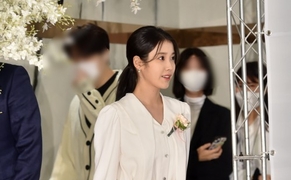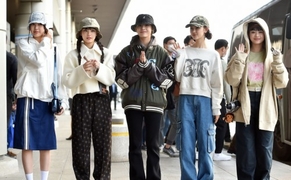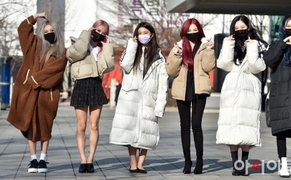 |
| The view of Changsin and Sungin districts, which have been selected for the urban renewal project since 2014. Stairways and sidewalk blocks have improved, but old, shabby houses remain the same./ Photographed by Jeong Ah-reum |
By AsiaToday reporter Jeong Ah-reum
As I went out through the Exit 4 of Changsin Station on Monday afternoon, a steep slope full of houses caught my attention. The alley of Changsin-dong, which has been undergoing the urban renewal project, was clean and neat with newly built sidewalk blocks but the houses still looked old and shabby. The steep staircase had new handles, making it easier for pedestrians to go up and down. Small sewing factories were in places in the residential area, making sewing noises. In the alley, motorcycles carrying cloth were coming and going without a break all day long.
The Moon Jae-in government is gearing up for the urban renewal new deal program, one of the major campaign pledges President Moon Jae-in made, increasing focus on Changsin and Sungin districts in Seoul. In 2014, both Changsin-dong and Sungin-dong were designated as urban renewal testing regions and this year marks the 3rd anniversary.
The Seoul Metropolitan Government has been renewing urban scenes of 830,130 square meters in Changsin-dong and Sungin-dong with a budget of 20 billion won.
Both Changsin and Sungin-dong are evaluated as "half success." The walkways have been improved with safety and cleanup efforts. From last year to this year, 16 CCTV emergency bells, 250 solar lights, and 160 safety devices that automatically notify the location of children have been installed around the streets.
As for public facilities, Nam June Paik Memorial Hall was opened in March. The Sewing Museum and Danggogae Senior Citizen Center are being constructed.
However, the poor housing environment has not changed much from before the urban renewal.
Many citizens of the region point out that there is a limit to the renewal because of the narrow roads and the coexistence of villages and sewing factories.
Mr. A, a land agent who has been working in the region for 7 years, said, "It's not easy for the village residents and the factory residents to reach a consensus."
The city provides long-term loans at low interest rates for those who want to build a new house or improve their house, but that doesn't seem good enough.
Mr. B, who took out a long-term loan in Changsin-dong to improve his housing, said, "Even if I encourage neighbors to improve their homes, they feel burdensome because of their age. The policy doesn't fit residents."
The Seoul city lends 20 to 45 million won for improving the housing and 40 to 90 million won for building a new house in the urban renewal business area at 0.7% interest rate. The city supports up to 10 million won in housing repair costs for low-rise homes built over 20 years from the approval date for use.
A said, "Considering that the house upgrading cost in this region is 40-50 million won, the policy funds are not sufficient."
An official of the Seoul Metropolitan City said, "Public institutions cannot intervene public sector issues. We are considering the designation of the remodeling activation zone." He added, "The renewal should be done through the participation of the residents without completely demolishing the sites."
#Moon Jae-in Government #Urban Renewal #Seoul Metropolitan
Copyright by Asiatoday
Most Read
-
1
-
2
-
3
-
4
-
5
-
6
-
7





















